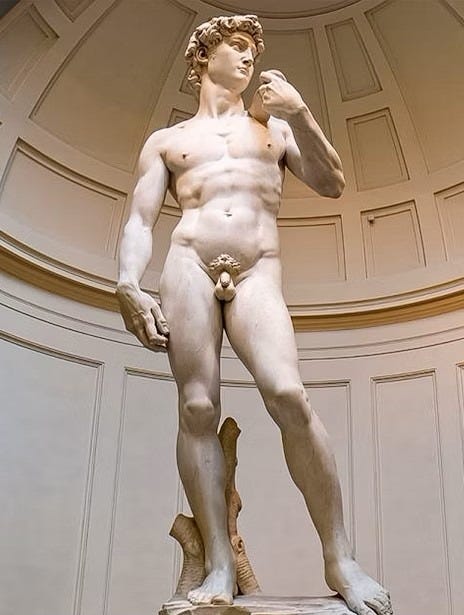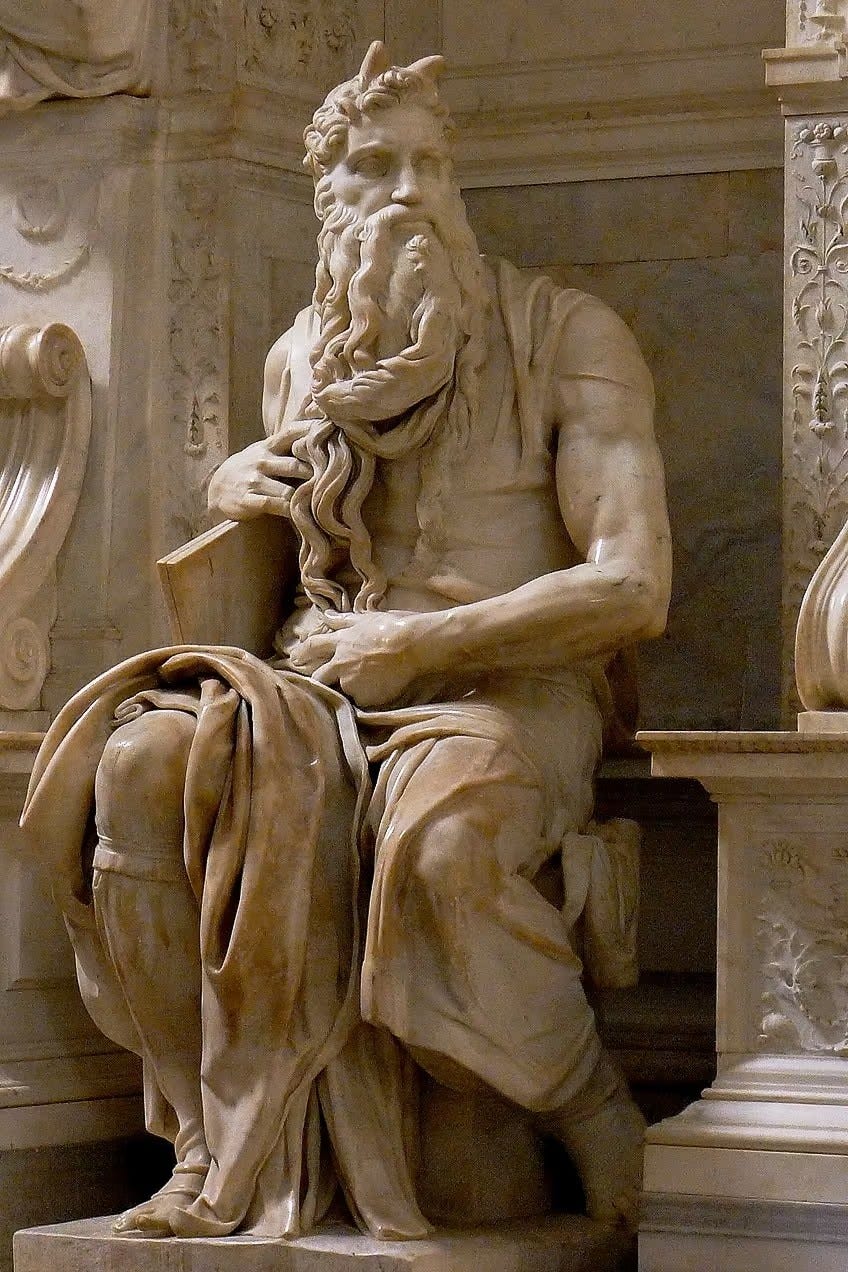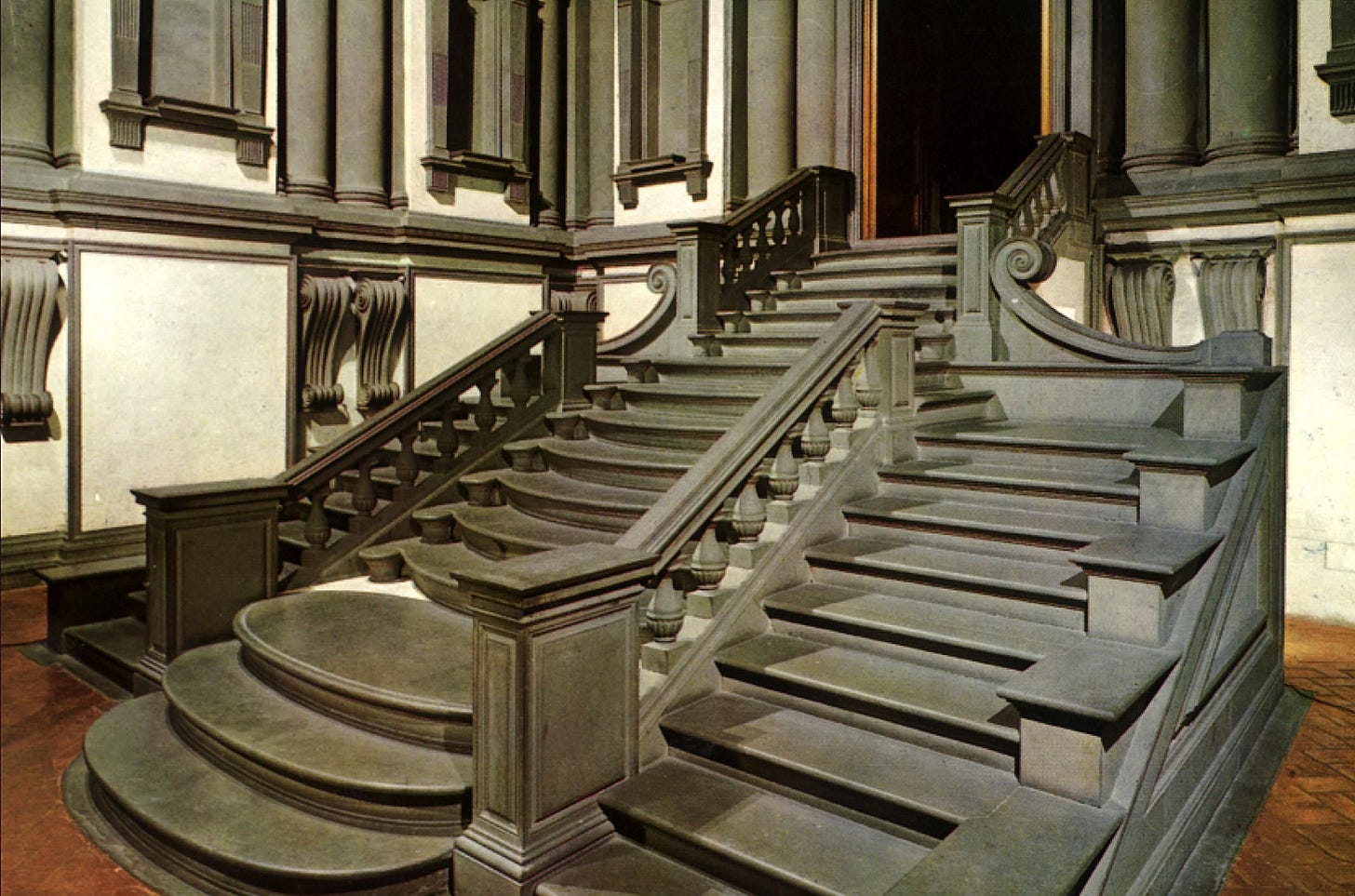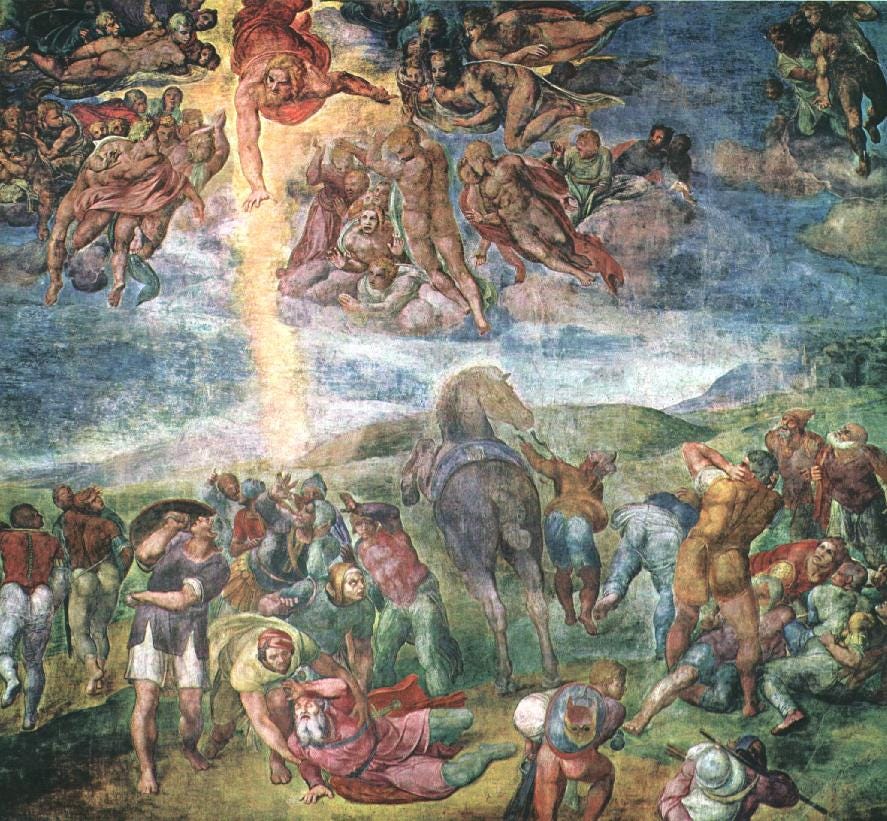
Michelangelo Buonarroti is one of the most celebrated artists of the Italian Renaissance, revered for his masterful sculptures, paintings, and architectural achievements. His works, imbued with a sense of divine inspiration and unparalleled technical skill, continue to influence and captivate audiences centuries after his death. This introduction explores his early life, artistic masterpieces, later years, and his lasting impact on art history.
Early Life
Michelangelo di Lodovico Buonarroti Simoni was born on March 6, 1475, in Caprese, a small town in the Republic of Florence. Shortly after his birth, his family moved to Settignano, where he spent his early years surrounded by stone quarries and masons — an environment that may have influenced his artistic inclinations.
At the age of thirteen, Michelangelo was apprenticed to the painter Domenico Ghirlandaio in Florence. Recognizing his extraordinary talent, Ghirlandaio recommended him to the powerful Medici family, who became his patrons. Under the guidance of Lorenzo de' Medici, Michelangelo honed his craft and immersed himself in the intellectual and artistic circles of Florence, engaging with humanist scholars and fellow artists.
Masterpieces
Sculpture: Pietà and David
One of Michelangelo's earliest masterpieces, the Pietà (1498-1499), is a striking marble sculpture that depicts the Virgin Mary cradling the lifeless body of Christ. Created for St. Peter’s Basilica in Rome, this work showcases Michelangelo's ability to render human emotion and delicate drapery with lifelike precision. It remains one of the most admired sculptures in the world.
Perhaps his most iconic work, David (1501-1504), was sculpted from a single block of marble. The 17-foot-tall statue portrays the biblical hero in a moment of intense contemplation before his battle with Goliath. Michelangelo’s David epitomizes the ideals of Renaissance humanism, with its emphasis on anatomical perfection and individual strength.
Another powerful marble sculpture, Moses (1513-1515), was created for the tomb of Pope Julius II. Notable for its lifelike detail, particularly the muscular arms and intense gaze, this work captures the prophet in a moment of profound contemplation. The figure's "horns" are the result of a mistranslation of the Hebrew Bible, where "rays of light" were misinterpreted as "horns."
Later in life, Michelangelo created The Deposition (Pietà Bandini) (1547-1555), which depicts Christ’s body being lowered from the cross. Unlike his youthful Pietà, this work is deeply personal and believed to have been intended for Michelangelo’s own tomb. The raw, unfinished quality of the sculpture adds to its emotional weight.
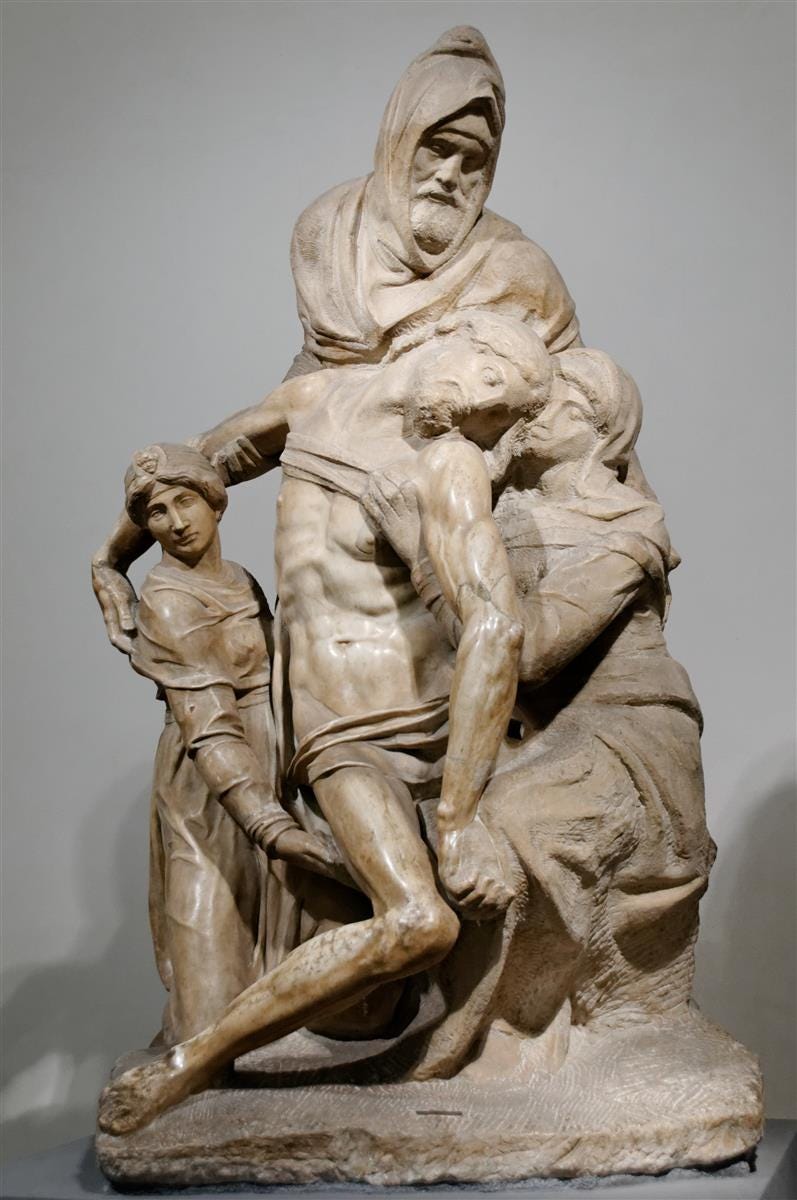
Painting: The Sistine Chapel Ceiling and The Last Judgment
Commissioned by Pope Julius II, Michelangelo painted the ceiling of the Sistine Chapel between 1508 and 1512. This colossal project involved over 300 figures, depicting scenes from Genesis. Among them, The Creation of Adam (1511-1512) is perhaps the most famous. It captures the moment God gives life to Adam, their outstretched hands nearly touching—a powerful symbol of divine inspiration and human potential.
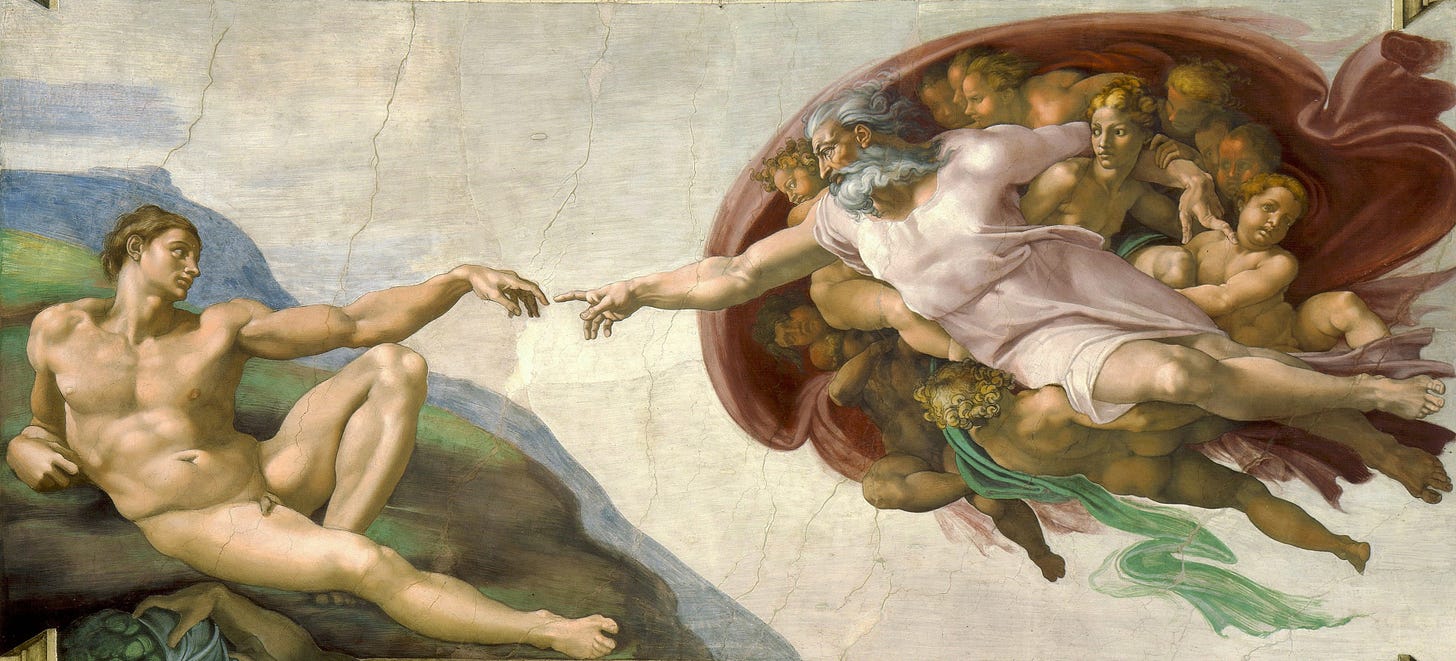
Later, Michelangelo returned to the Sistine Chapel to paint The Last Judgment (1536-1541) on the altar wall. This dramatic fresco portrays the Second Coming of Christ and the final judgment of souls, filled with muscular, contorted figures. The intense emotion and dynamic composition make it one of the most striking religious artworks in history.
Architecture: St. Peter’s Basilica and the Laurentian Library
In his later years, Michelangelo contributed significantly to architecture, most notably designing the dome of St. Peter’s Basilica (1547-1564). Although the project was not completed during his lifetime, his vision defined the structure and set a standard for domed architecture that influenced generations of architects.
Another remarkable architectural project was the Laurentian Library Staircase (1524-1534) in Florence. This innovative design features a sculptural, flowing staircase that seems to defy rigid architectural norms. Its dramatic, almost theatrical form showcases Michelangelo’s ability to blend sculpture and architecture seamlessly.
Later Years
Despite his immense success, Michelangelo led a relatively solitary and often tormented life, plagued by perfectionism and a deep religious devotion. In his final years, he turned increasingly to poetry and religious subjects, producing numerous sonnets and sketches that reflected his inner struggles and spiritual concerns. He died in Rome on February 18, 1564, at the age of 88. Per his wishes, his body was returned to Florence and buried in the Basilica of Santa Croce.
Influence on Art
Michelangelo’s impact on Western art is immeasurable. His mastery of the human form, particularly his ability to capture emotion and movement, set new artistic standards. Later artists, including the Mannerists and Baroque painters, drew heavily from his innovations in anatomy, composition, and dramatic expression. Even today, his works serve as a benchmark for excellence in sculpture, painting, and architecture.
His ability to transcend mediums — excelling equally in sculpture, painting, and architecture — established him as the ultimate Renaissance artist. His influence can be seen not only in the works of later artists such as Caravaggio and Bernini but also in modern art, where his legacy continues to inspire creativity and technical mastery.
Resources
For those who wish to explore Michelangelo’s life and work further, the following resources provide valuable insights:
Books:
Michelangelo: A Life in Six Masterpieces by Miles J. Unger
The Agony and the Ecstasy by Irving Stone (a historical novel based on Michelangelo’s life)
Michelangelo and the Sistine Chapel by Andrew Graham-Dixon
Museums & Locations:
Galleria dell’Accademia, Florence (David)
St. Peter’s Basilica, Vatican City
Sistine Chapel, Vatican Museums
Museo dell’Opera del Duomo, Florence (Pietà Bandini)
San Pietro in Vincoli, Rome (Moses)
Laurentian Library, Florence
Online Resources:
The Vatican Museums’ official website offers virtual tours of the Sistine Chapel. Visit the Vatican Museum
The Metropolitan Museum of Art provides articles and images of Michelangelo’s drawings and sculptures. Visit the Met
Michelangelo’s genius continues to captivate and inspire, making him one of the most enduring figures in art history. His works are not just artistic achievements but profound statements on human potential, beauty, and divine inspiration. Whether through sculpture, painting, or architecture, Michelangelo left behind a legacy that continues to shape the world of art.
Strokes of Genius is Kent’s journal of his exploration into the world of art history — learning, reflecting, and sharing discoveries along the way.



